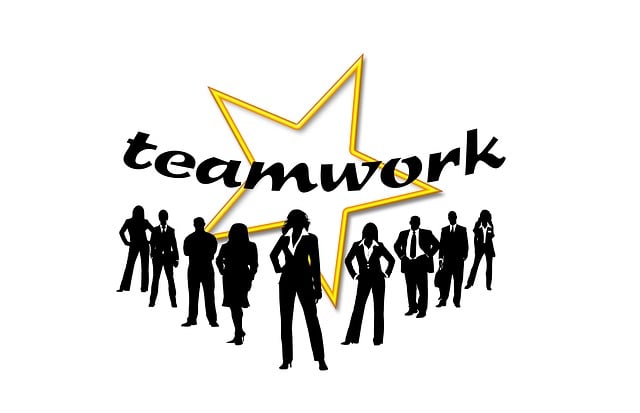Professional Liability Insurance (PLI), also known as errors and omissions (E&O) coverage, protects professionals across sectors from financial losses due to negligence or service mistakes, safeguarding assets and reputations. It covers legal fees and damages in successful lawsuits, offering peace of mind. Policies are customizable to industry-specific risks, with pricing influenced by service complexity, reputation, and coverage limits. Understanding claims handling, defense, and exclusions is essential for adequate protection. Regular policy reviews and updates ensure comprehensive coverage as practices evolve.
“Unraveling the complexities of Professional Liability Insurance: A Comprehensive Guide. In today’s professional landscape, safeguarding your practice against potential liabilities is paramount. This article navigates the intricacies of Professional Liability Insurance, offering a concise guide for businesses seeking protection. From understanding the basics to identifying risks and navigating claims, we explore key components, policy types, pricing factors, and best practices. Empower yourself with knowledge on how to select and maintain comprehensive Professional Liability Insurance tailored to your needs.”
Understanding Professional Liability Insurance: A Basic Guide

Professional Liability Insurance, also known as errors and omissions (E&O) coverage, is a crucial safeguard for professionals across various industries. It protects against financial loss arising from professional negligence or mistakes in service provision. This insurance is designed to cover legal expenses and damages awarded in the event of malpractice, ensuring individuals and businesses can navigate potential liabilities with financial security.
When you purchase Professional Liability Insurance, you’re creating a safety net that shields your assets and reputation. It’s especially vital for professionals who offer expert advice or services, as it protects against claims of negligence, errors, or omissions in their work. This includes attorneys, accountants, consultants, and medical practitioners, among others, helping them maintain trust and stability within their client base.
Who Needs Professional Liability Coverage?

Professional liability coverage, also known as errors and omissions (E&O) insurance, is an essential tool for professionals across various industries. It protects against financial loss resulting from professional negligence or mistakes in service provision. Whether you’re a doctor, lawyer, accountant, consultant, or any other expert offering specialized services, having this insurance can shield you from potential claims. These claims often arise when clients incur losses due to errors, omissions, or faulty advice given by professionals.
Professionals should consider obtaining Professional Liability Insurance to safeguard their assets and reputation. It covers legal fees and damages awarded in successful lawsuits, providing financial protection during times of crisis. Moreover, it offers peace of mind, ensuring that professionals can focus on delivering quality services without the constant fear of being held liable for unforeseen mistakes.
Types of Professional Liability Policies: What's Available?

Professional liability insurance, also known as errors and omissions (E&O) coverage, is a crucial safeguard for businesses across various industries. This type of insurance protects professionals from financial loss resulting from negligence or errors in their work. The policies available offer flexible options tailored to meet the unique needs of different professions.
There are several types of professional liability policies designed to cater to diverse business requirements. General liability covers typical risks associated with a profession, including medical malpractice, legal fees, and compensation for any harm caused to clients or third parties. More specialized policies, like those for accountants, lawyers, and IT professionals, offer enhanced coverage for industry-specific concerns, ensuring comprehensive protection against potential liabilities.
Key Components of a Comprehensive Professional Liability Policy

A comprehensive Professional Liability Insurance policy is a crucial tool for professionals across various sectors, protecting them from potential claims and suits arising from their work. At its core, this insurance covers legal expenses and damages when a professional’s negligence or errors lead to client injuries, property damage, or financial losses.
The key components of such a policy include broad coverage for professional services, which can encompass a wide range of industries like healthcare, law, accounting, and consulting. It typically includes liability for personal and advertising injury, offering protection against claims related to inaccurate or incomplete marketing materials. Additionally, it covers medical expenses if a client suffers an injury due to the professional’s negligence, ensuring financial security in such unforeseen events.
Assessing Risks: Identifying Potential Liabilities

In the realm of professional liability, assessing risks is a meticulous process that forms the bedrock of informed decision-making for businesses and professionals. Identifying potential liabilities under Professional Liability Insurance (PLI) involves a comprehensive evaluation of activities, services offered, and the inherent risks associated with them. This critical step ensures that adequate coverage is in place to safeguard against financial losses and reputational damage resulting from professional negligence or mishaps.
Business owners and professionals must meticulously scrutinize their operations, considering various scenarios where errors, omissions, or breaches of duty could lead to claims. From mismanaged projects to faulty advice, every potential pitfall should be acknowledged and analyzed. This involves understanding the unique risks inherent in their industry, staying abreast of relevant laws and regulations, and recognizing the expectations of clients and customers. By taking a proactive approach to risk assessment, businesses can tailor their Professional Liability Insurance coverage accordingly, fostering a robust risk management strategy.
Pricing and Cost Factors in Professional Liability Insurance

The pricing of Professional Liability Insurance (PLI) varies based on several key cost factors. One primary determinant is the nature and complexity of the professional services offered. Risks associated with high-stakes or specialized practices often translate to higher insurance premiums. Additionally, the industry reputation and claims history play a significant role; professionals with a proven track record of error-free service may enjoy lower rates due to reduced perceived risk.
Other influencing factors include the policy’s coverage limits, deductibles, and waiting periods (also known as retention periods). Higher coverage amounts generally command higher premiums. Deductibles, the amount paid out of pocket before insurance kicks in, can also significantly impact overall cost. Similarly, shorter waiting periods result in higher prices, reflecting the increased exposure during those initial periods.
Claims Handling and Defense: What Your Policy Covers

When it comes to Professional Liability Insurance, understanding your policy’s coverage for claims handling and defense is paramount. This aspect ensures that your insurance company will support you in managing and defending against legal claims that arise from professional negligence or errors and omissions. The insurance will typically cover the costs associated with settlement negotiations, court fees, and attorney fees, providing a safety net during times of potential financial exposure.
Your policy should include provisions for both defense and indemnification. Defense coverage means your insurer will provide legal representation to defend you against claims, while indemnification covers any damages or settlements that may be awarded against you. This comprehensive protection is vital in mitigating the risks associated with professional liability, ensuring you can focus on serving your clients effectively without the constant burden of legal worries.
Exclusions to Watch Out For in Professional Liability Insurance

When considering Professional Liability Insurance, understanding exclusions is paramount. These are circumstances or events that the policy specifically does not cover, leaving gaps in protection. Some common exclusions include intentional acts—where the insured intentionally causes harm or damage—and non-financial losses such as personal injury or emotional distress.
Another area to watch out for is professional negligence, which occurs when there’s a failure to meet the required standard of care in rendering services. This can include errors or omissions in advice, plans, specifications, or directions provided by professionals. Additionally, certain types of business operations, like war, civil unrest, or nuclear hazards, are often excluded from standard policies. Staying aware of these exclusions ensures that you’re adequately protected against potential risks associated with your professional endeavors.
Staying Protected: Best Practices for Maintaining Coverage

Staying protected is paramount for any professional, and one of the best ways to safeguard your career and future is by ensuring comprehensive Professional Liability Insurance coverage. This insurance acts as a shield against potential claims, offering financial protection if you’re held liable for errors, omissions, or negligence in your work. Regularly reviewing and updating your policy is essential; businesses and practices evolve, and so should your liability coverage to accommodate new risks and responsibilities.
Best practices include staying informed about industry-specific regulations and legal requirements, attending workshops or training sessions related to risk management, and keeping detailed records of all professional interactions. Additionally, comparing policies from different providers can help you find the best fit for your needs, ensuring you have adequate protection while also managing costs effectively.
